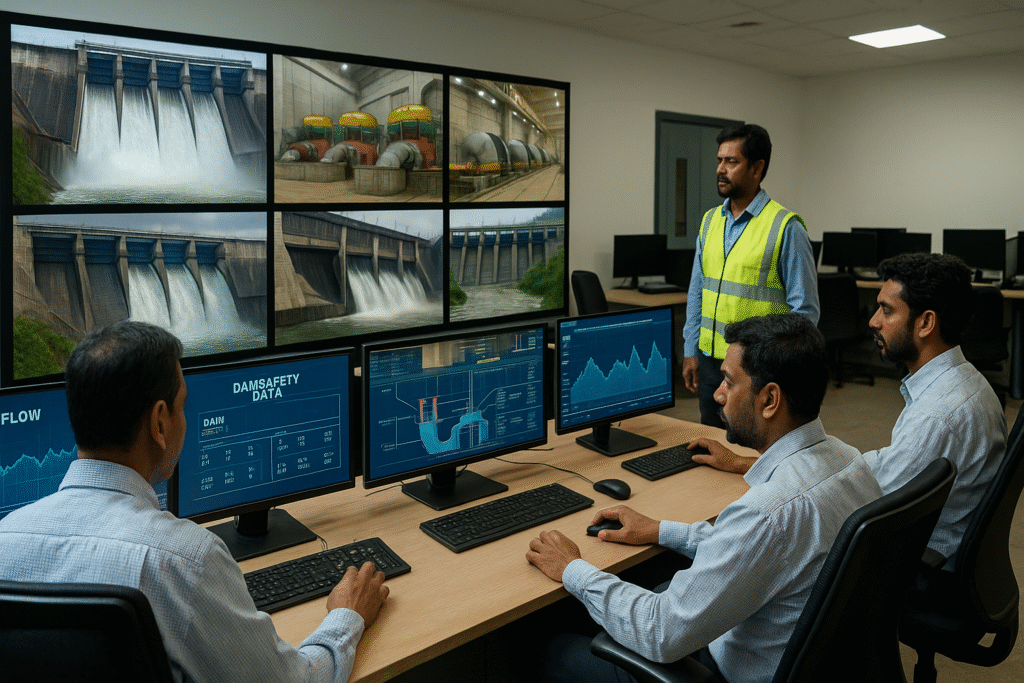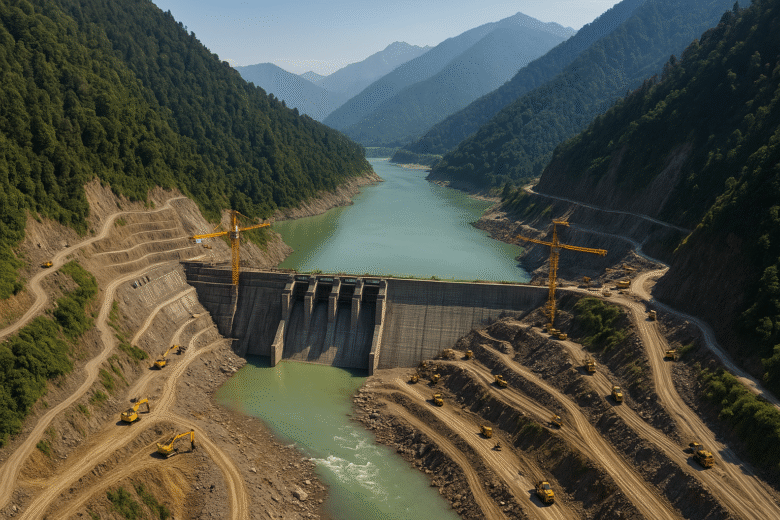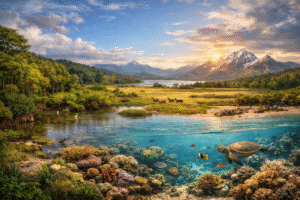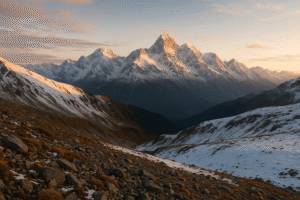Fun fact: India plans to build more than 200 large hydropower projects in the next two decades—so many that you could fit a new dam every week and still have spares.
This startling reality lies at the heart of “India’s $77B Hydro Plan: Dams as Climate Solution or Ecological Time Bomb?” The government’s ambitious ₹6.4 trillion (US$77 billion) plan aimed at unlocking more than 76 gigawatts (GW) of hydropower from the Brahmaputra River basin raises big questions: is this India’s green-energy future, or a gamble on fragile river ecosystems and communities?
What is the $77B hydro plan?
The Central Electricity Authority (CEA) of India has outlined a transmission and hydropower master-plan covering 208 large hydro and pumped-storage projects across 12 sub-basins in the northeastern states. The target: about 64.9 GW of conventional hydropower plus 11.1 GW of pumped storage by 2047.
The plan dovetails with India’s broader renewable strategy: adding clean energy, reducing fossil-fuel reliance, and stabilising an increasingly volatile grid. But at the same time, it places heavy reliance on river systems, ecosystems, communities and terrain that many experts say are already under stress.
Why it looks like part of the climate solution
Hydropower offers several advantages:
- It produces low-carbon electricity (once built) and can operate round-the-clock, unlike solar or wind which are intermittent.
- Pumped storage adds flexibility: when excess solar is available, water is pumped uphill and released during peak demand, helping grid stability.
- By using India’s untapped hydro potential—especially in remote regions—the plan aims to divert pressure from coal-based power plants and reduce greenhouse-gas emissions.
In short: from a carbon-accounting vantage, large hydro looks like a solid transition tool.
But—and it’s a big but—what about the ecological and human cost?
River ecosystems under threat
The Brahmaputra and its tributaries flow through biodiversity-rich, geologically young Himalayan terrain. Large dam reservoirs inundate forest, disrupt fish migration, alter sediment flows, and change downstream hydrology. The longer-term consequences for aquatic life and river health are rarely trivial.
Social and displacement issues
Dams often require land acquisition, resettlement of local communities (including indigenous people), and changes to livelihood patterns. In parts of Arunachal Pradesh, for instance, proposed projects already face protests over land rights, cultural heritage and ecological risk.
Seismic and geological risk
The Himalayan region is tectonically active. When you stack large water reservoirs in such terrain you add risk—of landslides, tremors, dam-failure hazards. Experts have flagged that some projects may not fully account for these risks.

Lock-in and opportunity cost
Building large dams takes years, huge capital, and long-term commitment. As climate and technology shift, there’s a risk that these dams might become stranded assets or under-utilised if hydrology changes or alternative energy systems evolve faster.
Downstream transboundary and regional impacts
The Brahmaputra originates in Tibet (China) and flows through India into Bangladesh. With upstream dam building in China, India’s hydro expansion has geopolitical dimensions. Changes in upstream flow, reservoir management, and water sharing become strategic considerations—not just energy ones.
Anecdote: Village voices, unseen costs
In a remote Himalayan valley where a dam is proposed, local villagers say they already feel the change: rock faces showing fresh fissures, riverbeds shifting, fish catches declining. One farmer remarked: “They talk of megawatts and grid stability, but we talk of the river that fed our fields and our history.” That voice is rarely heard in central strategy documents—but it matters.
Trade-off reasoning: energy vs ecosystem
We tend to frame it as “development vs nature,” but in reality the trade-off is more complex:
- If India fails to build clean firm capacity fast, it risks burdening the grid with fossil generation, undermining its climate targets.
- If it builds large hydro without proper safeguards, it risks ecological degradation, loss of livelihoods, geophysical hazards and social conflict.
The question for policymakers and citizens becomes: can we design hydro projects that deliver the energy while minimising damage? Can benefit-sharing, community rights, environmental flows, sediment management, fish passage and seismic design become standard, not exceptions?
Why it’s provoking public questions
Because the scale is massive. A $77 billion plan means many dams, long transmission corridors, ecological scars—and political consequences. It insists that citizens ask: whose rivers? whose electricity? whose benefit? It also forces a confrontation: the logic that “large dams are automatically good for climate” might be oversimplified. Real leadership means showing how the “time bomb” is defused, not ignored.
Conclusion
India’s $77 B Hydro Plan: Dams as Climate Solution or Ecological Time Bomb? is more than just a headline—it’s a national crossroads. On one path lies major clean-energy growth, grid resilience and emissions cuts. On the other lies social upheaval, river-ecosystem damage, regional tensions and geological risk. The trick is not simply choosing “energy” over “ecology” or vice-versa, but designing a model where they co-exist.
So here’s the call to action: ask your state and central representatives what safeguards will apply to the dams your region may host; demand transparent environmental-impact assessments; support local voices in decision-making; insist that the cost of rivers and communities is not written off in the name of megawatts. Because if the dams go up, our future, our rivers and our justice may be the ones that get held captive.
Author’s Note
I once paddled a silent river at dawn, watching mist lift off calm water and fish dart beneath. I’ve also flown over dam-reservoirs that swallowed whole valleys and villages. In writing this piece, I didn’t want to cheer either side—I wanted to ask the tougher question: when you trade nature for power, what exactly are you giving up?
G.C., Ecosociosphere contributor.
References and Further Reading
- India unveils $77 billion hydro plan as China builds upstream dam – Reuters, Oct 13, 2025.
- Harnessing the Brahmaputra: Centre unveils Rs 6.4 lakh crore hydropower plan; counters China’s upstream dam – The Times of India, Oct 13, 2025.
- India launches $77 billion hydropower plan in Brahmaputra River – Anadolu Agency, Oct 14, 2025.




